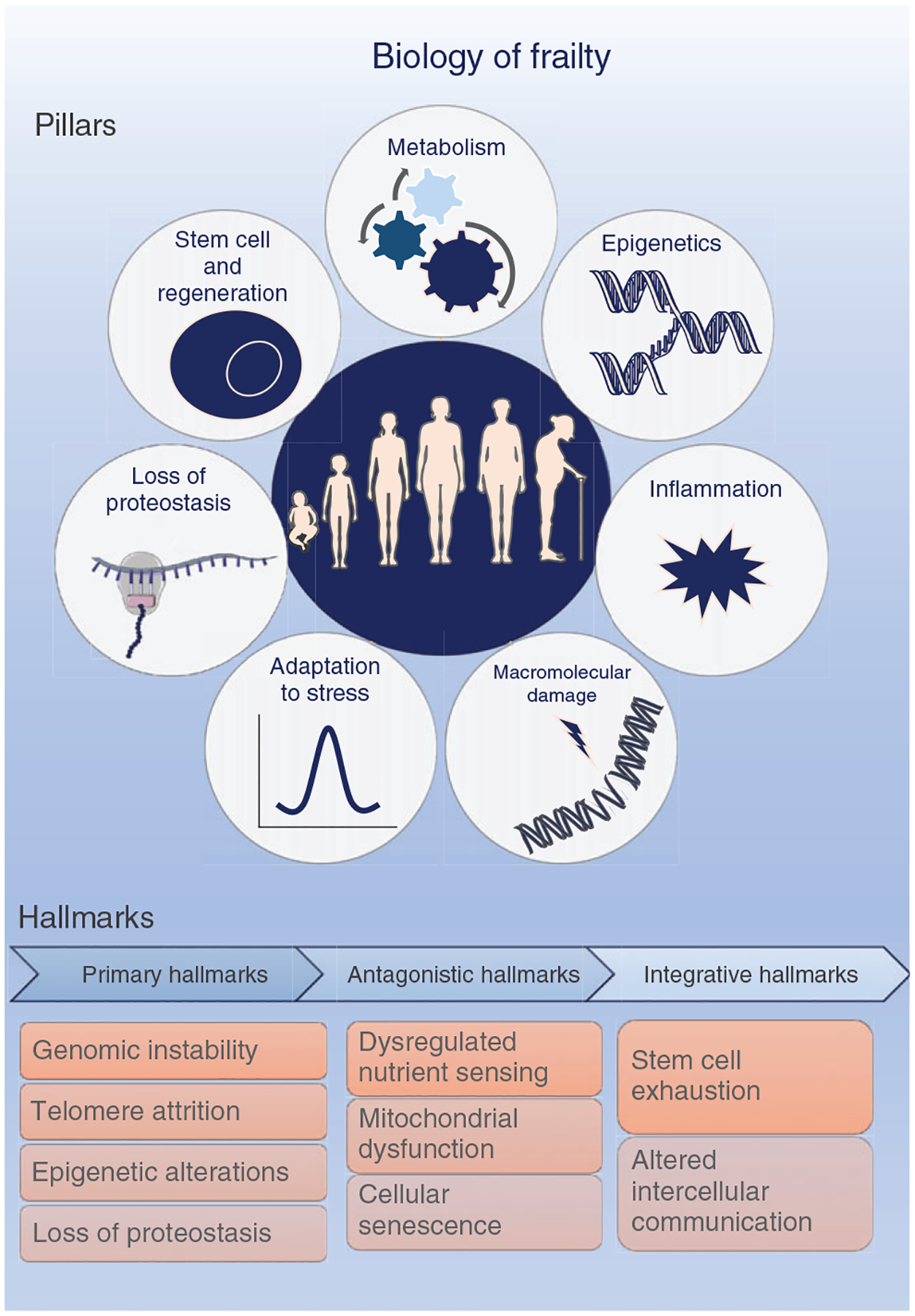Figure 3. Biology of frailty.

The two well-established conceptual frameworks defining the biology of aging are the Seven Pillars of Aging proposed by Kennedy et al. in (300) and the Hallmarks of Aging proposed by López-Otin et al. in (359) The Seven Pillars define the biological areas that likely contribute to the pathophysiology of aging and include metabolism, epigenetics, inflammation, macro-molecular damage, adaptation to stress, loss of proteostasis, and stem cells and regeneration. Similarly, the Hallmarks of Aging categorize the cellular and molecular processes that may lead to the aging phenotype as (i) the primary hallmarks—genomic instability, telomere attrition, epigenetic alterations, loss of proteostasis; (ii) the antagonistic hallmarks—dysregulated nutrient sensing, mitochondrial dysfunction, cellular senescence; and (iii) the integrative hallmarks—stem cell exhaustion and altered intercellular communication. Together, these two concepts identify potential routes to be targeted to extend healthspan and prevent or reduce frailty. The pillar of metabolism defines the signal transition pathways linked to the metabolism of aging, such as impaired glucose homeostasis and dysregulated nutrient sensing, whereas the epigenetics pillar links age-related environmental pressures altering the gene function, which might trigger genomic instability. The macro-molecular damage pillar is also illustrated as a primary hallmark as genomic instability and telomere attrition, which are all considered the causes of damage that might evolve to antagonistic hallmarks that are the response to damage and includes mitochondrial dysfunction and cellular senescence. The adaptation to stress illustrates the loss of resilience and resistance or how well the organism can combat and recover from a stressor, which might be molecular (loss of proteostasis, genomic instability), cellular (macromolecular damage accumulated in stem cells, stem cell function decline) or physiological (altered intercellular communication). Once the organism reaches the integrative hallmark level, a systemic dysfunction is reached, culminating in the Frailty Phenotype. Illustrations were obtained on https://smart.servier.com, Published by LES LABORATO-RIES SERVIER, SAS.
